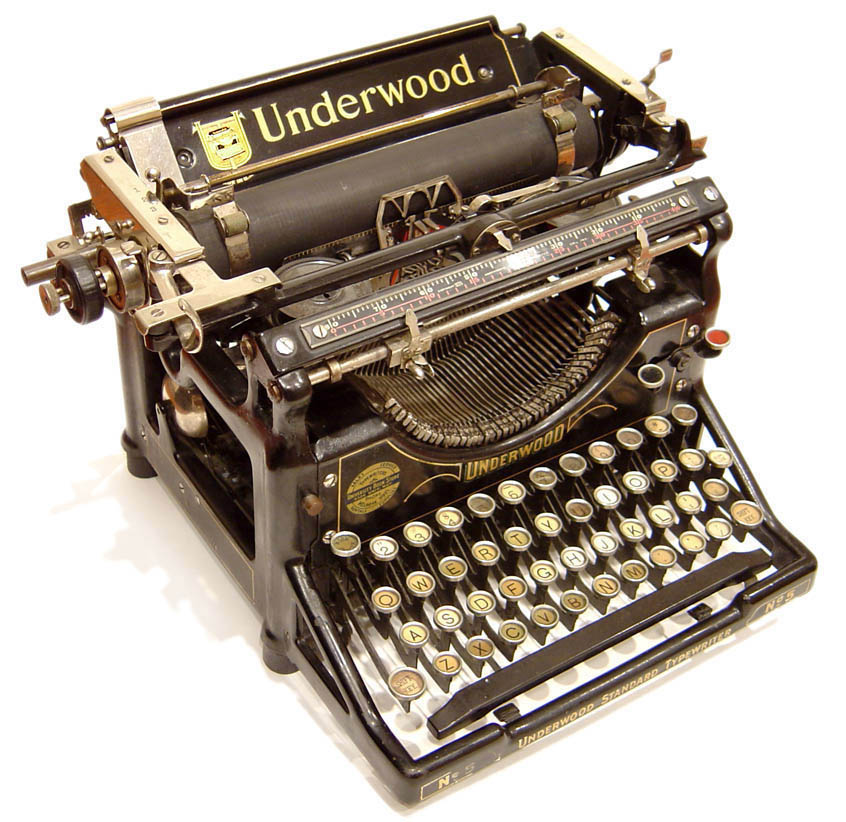Bruce Sterling’s thoughtful New York Times homage to Ray Bradbury reminded me that the recently deceased sci-fi author wrote his greatest work, Fahrenheit 451, on a coin-operated typewriter. The machine, invented in 1938 by Martin Tytell, was located in train stations and hotel lobbies and cost a couple of dimes an hour. From Tytell’s 2008 Economist obituary:
“His love affair had begun as a schoolboy, with an Underwood Five. It lay uncovered on a teacher’s desk, curved and sleek, the typebars modestly contained but the chrome lever gleaming. He took it gently apart, as far as he could fillet 3,200 pieces with his pocket tool, and each time attempted to get further. A repair man gave him lessons, until he was in demand all across New York. When he met his wife Pearl later, it was over typewriters. She wanted a Royal for her office; he persuaded her into a Remington, and then marriage. Pearl made another doctorly and expert presence in the shop, hovering behind the overflowing shelves where the convalescents slept in plastic shrouds.
Mr. Tytell could customise typewriters in all kinds of ways. He re-engineered them for the war-disabled and for railway stations, taking ten cents in the slot. With a nifty solder-gun and his small engraving lathe he could make an American typewriter speak 145 different tongues, from Russian to Homeric Greek. An idle gear, picked up for 45 cents on Canal Street, allowed him to make reverse carriages for right-to-left Arabic and Hebrew. He managed hieroglyphs, musical notation and the first cursive font, for Mamie Eisenhower, who had tired of writing out White House invitations.”
Read also:



